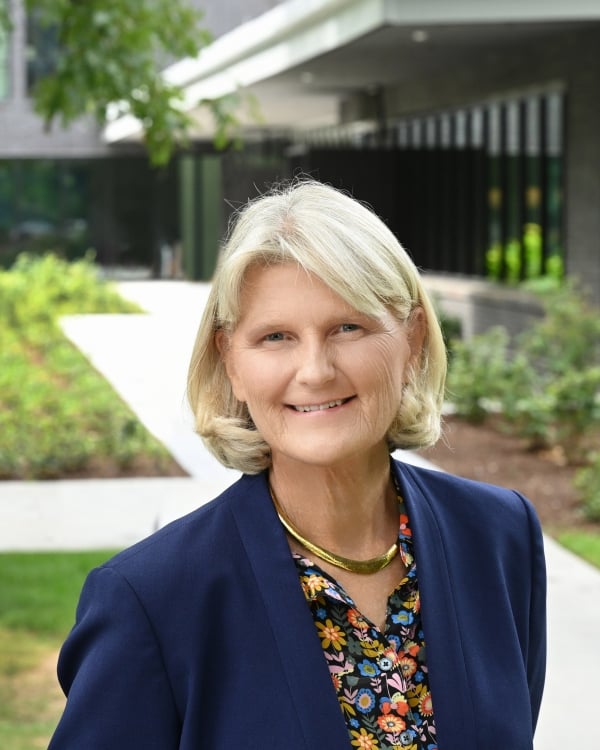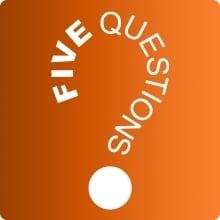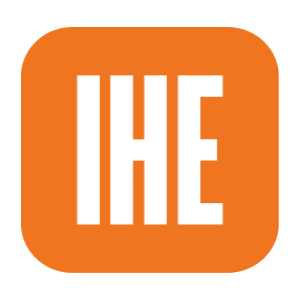Last month Vassar College doubled down on its liberal arts bona fides, opening a new institute to serve as a hub for policy and debate with the goal of making discussions about such issues more accessible. The Institute for the Liberal Arts, which sits on the edge of Vassar’s campus and includes a hotel and restaurant, is intended to engage the public at a time when skepticism abounds about the liberal arts and higher education.

Vassar College president Elizabeth H. Bradley joined Inside Higher Ed via Zoom for a wide-ranging conversation about the college’s commitment to the liberal arts, how higher education can win over an increasingly skeptical public and what the sector should expect from Donald Trump’s second term in the White House.

Her responses have been edited for length and clarity.
1. Tell me about the Institute for the Liberal Arts. What led to its creation and what is its purpose? And broadly speaking, how do you view the state of liberal arts in American higher education?
The Vassar Institute for the Liberal Arts was created as a public classroom. And what we mean by that is creating a space where we can convene important conversations with the constituents that are at Vassar, but also far beyond that, particularly in our local area, Dutchess County, but regionally, nationally and globally as well. I view the state of the liberal arts in the United States as currently a topic of debate, and we use the tools of dialogue and intellectual thought and pluralism to debate all kinds of issues; now we’re debating about higher education. Ironically, I think the liberal arts approach can help us debate the liberal arts.
But when we talk about the liberal arts at Vassar, we are referring to a three-part approach to education. One part is the coursework, which is meant to be broad, not narrow. People are supposed to take courses in the sciences, the social sciences and the humanities, the arts, language, et cetera.
The second part is the pedagogy. The teaching style is inquiry-based, meaning students will not be lectured at, they won’t be told to memorize everything, they will be engaged in the conversation themselves, helping push boundaries on what they’re thinking and what the faculty are thinking, and really engaging those students heavily in their own education.
The third part of it is the culture. We try to deliver this in a culture that emphasizes equity in the classroom, where all voices can be heard, that emphasizes openness to new ideas and critique of the status quo. But I want to add not just the critique of the status quo but also the critique of the critique of the status quo, because the learning mind is one that can never know the answer and continues to be in pursuit of the truth. That’s what we consider the liberal arts education.
2. You co-wrote an op-ed for us back in August in which you discussed a breakdown in dialogue on campus. What can professors and especially presidents do to address this breakdown?
To address what we might experience as a breakdown in dialogue on campus, we have to be patient. First things break, but they get fixed. At one moment there’s a break in the dialogue, [but] that just means you have to work harder at this and be patient, because it will unfold over time.
Learning is so messy. People make mistakes before they correct their mistakes, and that, by the way, is education. So I think we can’t overreact. We have to be patient, realizing this takes time.
The other thing that’s needed are faculty who are in a support structure that allows them to spend adequate time with a reasonable number of students. If you’re one faculty person, you have 60 students and you’re trying to teach a huge curriculum, you’re just not going to have time to make those students feel engaged. I think the investment we talked about in that op-ed is fundamental. And I think presidents can behave in a way with students that fosters dialogue. That means you have to spend time with students face-to-face, you have to ask them what they think and when they tell you something you don’t like to hear, you have to be patient with them and say, “OK, let’s evaluate that. Why don’t we think about that in other ways, too?” rather than just shutting it down. You have to create a relationship—I think it’s almost as simple as that. Create a relationship which is built on some amount of empathy and trust and hope.
3. What do you think led to this breakdown in dialogue? Is there an inflection point that you see?
I don’t really see one inflection point. I think there is an ebb and flow in this depending how safe or hostile people feel the environment is—and not just their environment on campus, but the environment in the country and around the globe. If we go back to the 1960s when we were in the Vietnam War, and we go back to the gas crisis in 1974, if we go back to [the Nixon administration], there are multiple times where there was true polarization and consternation, either nationally or globally. That’s the tough time; that’s when people take sides and they easily then become not willing to have the dialogue.
The fact that a lot of our communication is now done very quickly and not face-to-face kind of sucks out the ability to say, “Wait a minute, we need some time. Let’s have a cup of tea together.” It makes the exchange so parsimonious—you don’t get all the body language and the facial expressions and the intonation of the voice, which all has information in it that builds empathy and trust. So the lack of that challenges us more.
4. A question I’m asking just about every college president these days: What do you expect from a second Trump administration? What are the immediate changes and challenges for the higher education sector?
I think we have to be prepared for completely new expectations in higher education and be prepared to react in ways that preserve what we think is most important and remains legal, following what the new administration will want. We have to be proactive and ready for that. I think we have to be really patient and mindful and wait and see, because we just can’t possibly know what’s actually going to happen.
We kind of have to act at two speeds at once, which is hard. We have to be totally ready to go and also just wait. My expectation is there will be a lot more dialogue about this. Institutions of higher education are already, and have been for some time, self-examining, asking, “What are we doing right? What do we wish we could do better?” We produce public goods like research and educated people who can foster a great economy. But what else do we do that has unintended effects? What are areas where we have not been able to appeal to a broad American public? We’re thinking about that and trying to understand it.
5. There is a lot of anxiety among presidents over the unclear regulatory environment ahead, business challenges, social tensions and so on. But what are you optimistic about? What gives you hope?
Every day I get to know these students and our faculty—even the junior faculty, who are just starting out their careers—and they are incredibly inspiring people, people who have had tremendous adversity, who have come from poverty, have had deaths in their family. They’ve had a huge amount of adversity and are still here, working as hard as they can, as creatively as they can. And then I get to see the students graduate and do amazing things and that gives me hope. It’s the most fun job in the world. I think as long as we still have the majority of our students having that experience, we’ll be supported. And that gives me hope as well.
To come full circle, the Institute, where we began, also gives me hope. We just opened six weeks ago or so, and two weeks ago, we had great opening ceremonies and a wonderful panel on [artificial intelligence] and the future of work. The take-home message was that at the precipice of this enormous explosion in AI, the most important sort of human-valued jobs and characteristics will be empathy, creativity, being strategic about how groups work and working across differences.

